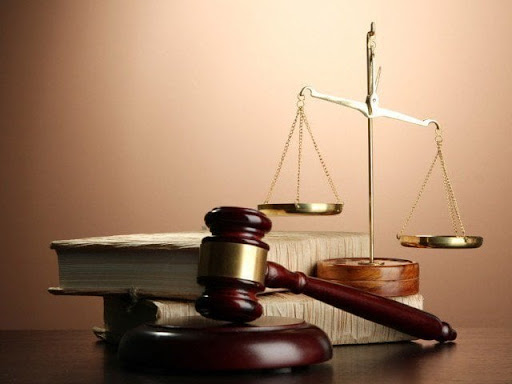
Bankruptcy is a legal process designed to help individuals or businesses that are struggling with unmanageable debt. It offers a way to eliminate or restructure debt and provide relief to debtors who are unable to pay their creditors. While bankruptcy can offer a fresh financial start, it also comes with significant consequences, such as damaged credit and potential loss of assets. This article explores what bankruptcy is, the types available for individuals and businesses, and how the legal options work in the United States.
Understanding Bankruptcy
At its core, bankruptcy is a process regulated by federal law that allows individuals and businesses to either eliminate or repay their debts under the protection of the bankruptcy court. The U.S. Bankruptcy Code governs the bankruptcy process, which is designed to balance the interests of creditors (those owed money) and debtors (those who owe money).
Bankruptcy can be voluntary or involuntary. In voluntary bankruptcy, the debtor files a petition for relief with the court. In involuntary bankruptcy, creditors file a petition to force a debtor into bankruptcy. In both cases, once the process starts, an automatic stay is issued, which temporarily halts creditors’ collection actions, such as lawsuits, wage garnishments, and foreclosures.
Types of Bankruptcy for Individuals
For individuals, there are two main types of bankruptcy: Chapter 7 and Chapter 13. Each option provides a different route to address debt problems, depending on the individual’s financial circumstances.
1. Chapter 7 Bankruptcy (Liquidation Bankruptcy)
Chapter 7 is often referred to as “liquidation bankruptcy” because it involves the sale of a debtor’s non-exempt assets to repay creditors. It is the most common form of bankruptcy for individuals who have limited income and lack the means to pay off their debts.
Here’s how it works:
- Eligibility: To qualify for Chapter 7, individuals must pass a means test, which compares their income to the median income of their state. If the debtor’s income is below the threshold, they can file for Chapter 7. Otherwise, they may need to file under Chapter 13.
- Process: When an individual files for Chapter 7, a court-appointed trustee takes over the case. The trustee’s role is to liquidate non-exempt assets (property not protected by bankruptcy exemptions) and distribute the proceeds to creditors.
- Debt Discharge: After the liquidation process, most of the individual’s unsecured debts, such as credit card debt, medical bills, and personal loans, are discharged. However, certain types of debt—such as student loans, child support, alimony, and tax debts—typically cannot be discharged.
Pros:
- Quick process, usually completed in a few months.
- Discharges most unsecured debts.
- Provides immediate relief from collection actions.
Cons:
- Loss of non-exempt assets.
- Stays on credit reports for up to 10 years.
- Cannot discharge all types of debts.
2. Chapter 13 Bankruptcy (Reorganization Bankruptcy)
Chapter 13 bankruptcy is also known as “reorganization bankruptcy” and is typically for individuals with a regular income who want to keep their assets while repaying their debts over time. Instead of liquidating assets, Chapter 13 allows debtors to create a repayment plan that lasts three to five years.
Here’s how it works:
- Eligibility: Individuals must have a regular income and their unsecured debts must be below a certain threshold ($465,275 as of 2023) and secured debts below $1,395,875.
- Process: Under Chapter 13, the debtor proposes a repayment plan to the court, outlining how they will repay creditors over the next three to five years. The debtor’s disposable income (after essential living expenses) is used to make monthly payments to creditors, with the plan being approved by the court.
- Debt Discharge: At the end of the repayment plan, any remaining eligible unsecured debts may be discharged, offering financial relief.
Pros:
- Debtors can keep their property, including homes and cars.
- Stops foreclosure and allows repayment of mortgage arrears.
- Provides more flexibility in dealing with secured debts.
Cons:
- Requires regular income to make payments over three to five years.
- Lengthy process compared to Chapter 7.
- Stays on credit reports for up to seven years.

Types of Bankruptcy for Businesses
For businesses, the primary types of bankruptcy are Chapter 7 and Chapter 11. Depending on the business’s financial condition, it may opt for liquidation or reorganization.
1. Chapter 7 Bankruptcy for Businesses
Similar to Chapter 7 for individuals, Chapter 7 bankruptcy for businesses involves liquidation. This option is typically chosen when a business is unable to continue operating and wants to close down.
Here’s how it works:
- Process: When a business files for Chapter 7, a trustee is appointed to oversee the liquidation of the business’s assets. The proceeds are then used to pay off creditors in order of priority, starting with secured creditors, followed by unsecured creditors.
- End Result: The business ceases operations, its assets are sold, and the debts are resolved as far as the liquidation proceeds allow. After the process is completed, the business no longer exists.
Pros:
- Allows for an orderly shutdown of the business.
- Creditors are paid to the extent possible.
Cons:
- The business must close permanently.
- Limited options for paying off creditors in full.
2. Chapter 11 Bankruptcy (Reorganization Bankruptcy for Businesses)
Chapter 11 is designed for businesses that wish to continue operating while restructuring their debts. It is often referred to as “reorganization bankruptcy” and is commonly used by large corporations, though small businesses can also file under Chapter 11.
Here’s how it works:
- Process: In Chapter 11, the business files a reorganization plan with the court. This plan outlines how the business intends to restructure its debts, cut costs, and return to profitability. The business may negotiate with creditors to modify the terms of loans, extend payment deadlines, or reduce debt amounts. The plan must be approved by the court and creditors.
- Management: Unlike Chapter 7, where a trustee takes over, in Chapter 11, the business usually retains control of its operations as a “debtor in possession,” though the court has oversight.
- Debt Repayment: The business continues operating under the terms of the reorganization plan, repaying creditors over time while trying to regain financial stability.
Pros:
- Allows the business to continue operating while restructuring debt.
- Offers flexibility in dealing with various types of debt.
- Can prevent the business from closing down permanently.
Cons:
- Complex, lengthy, and expensive process.
- Court and creditor oversight can limit management autonomy.
- Requires a viable business plan to regain profitability.
The Bankruptcy Process
The bankruptcy process begins when the debtor files a petition with the bankruptcy court. This petition must include detailed information about the debtor’s financial situation, including assets, liabilities, income, and expenses. Whether filing for Chapter 7 or Chapter 13 (for individuals) or Chapter 11 (for businesses), the debtor must also complete credit counseling from an approved agency before filing.
Once the petition is filed, an automatic stay goes into effect, halting most collection actions by creditors. The bankruptcy court will appoint a trustee to oversee the case, depending on the type of bankruptcy. The court then reviews the case, determines the debtor’s eligibility, and either approves a repayment plan (in Chapter 13 or 11) or allows the liquidation of assets (in Chapter 7).
Conclusion
Bankruptcy can be a powerful tool for individuals and businesses facing overwhelming debt, but it should be considered carefully due to its long-term effects on credit, assets, and future financial opportunities. Chapter 7 bankruptcy offers a quick way to discharge most debts but at the cost of losing non-exempt assets. Chapter 13 provides individuals a way to reorganize their debt while keeping property, though it requires consistent income. For businesses, Chapter 7 liquidation may mean closing down, while Chapter 11 offers a chance to reorganize and continue operations. Consulting with a bankruptcy attorney can help determine which option is best for a particular financial situation. For more tips and advice about drivers not paying attention to motorbikers, you may visit their page to learn more.
